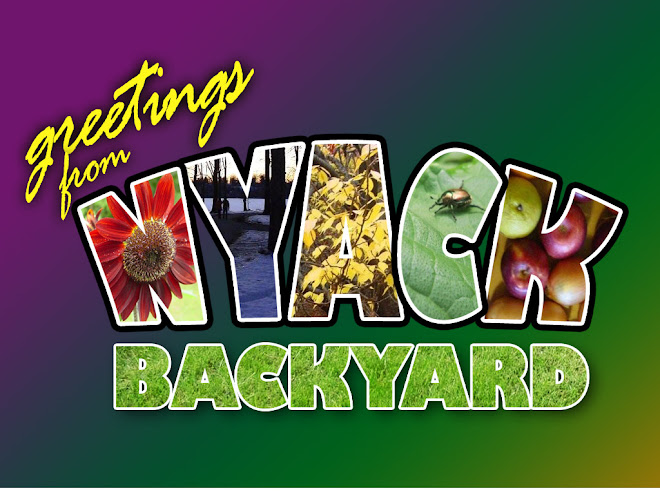| The roots smell amazing! |
Of course, nothing more needed to be said to make me slightly obsessed with breaking the rules and trying a brew from this "forbidden" root that was so conveniently growing 20 feet from my back door. Why? Why even bother with it when it could be so dangerous? Well, I did some research and nothing I read convinced me that I'd be taking my life into my hands by introducing a small amount of sassafras, just this one time, to my already embattled liver. However, please consider this a warning and imbibe at your own risk.
You can recognize sassafras by the leaves, which have 3 shapes - triple lobed, double lobed or "mitten" shaped, and unlobed.
| Anise Hyssop |
| Star anise |
20 inches of cleaned sassafrass root
20 anise hyssop leaves, washed
1 chai teabag
1/4 cup star anise
2 tsp. vanilla
1.5 cup brown sugar
2 Tbsp molasses
carbonated water
Start by making the brew: cover the sassafras root, anise hyssop leaves and star anise with 2 quarts of water and bring to a boil. Add the teabag and steep until the brew is a nice brown color (about 10 minutes), then remove the teabag. Cover the brew and allow to steep and cool overnight.
The next day strain out the solids. Add 2 t. of vanilla, 1.5 cups of brown sugar, and 2 Tbsp. of molasses. Stir well to dissolve and heat the mixture to boiling. Continue to boil, stirring occasionally, about 20 minutes or until the mixture is reduced by half- you will have a sweet, root beer flavored syrup.
The syrup can be added to carbonated water in any proportion you like. (If you have a Penguin or SodaStream, add the syrup as you would any of the other flavorings - you can play with the carbonation and proportions to suit your taste.) I used about a cup of syrup to 3 cups of carbonated water.
I always like to see the results of the taste tests done over at Serious Eats. Here's the one they did for root beers. What's your favorite kind of root beer?

5 comments:
Interesting...we have a lot of sassafras trees in the woods in the backyard. It is nice to know there is something I can do with them.
Oh my...that sounds so delicious & tempting for a hot, humid day. Good for you, tackling such an ambitious project!
Home-made root beer must taste very delicious. I think taking something in small amounts is not harmful. Even taking too much vitamin supplement also cause not good side effect. I guess everything has its balance.
I had some home made root beer at a beekeepers' event earlier in the spring. It made me change my attitudes on store bought root beer. (Well, maybe it didn't. That stuff is vile.)
Who knew that sassafras was a danger to mice and men?
Bravo!
My favorite root beer included a dollop of ice cream and was ingested in the late 70's at an A&W rootbeer stand in the midwest where the waitresses still came to your car, and hooked the tray over your window :)
Post a Comment